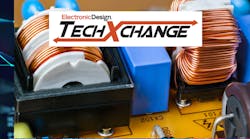Microchip-Delta Deal Underscores SiC’s Rise in Power Electronics
Microchip Technology said it will commit resources to “fast-track” the implementation of silicon carbide (SiC) in high-power and high-voltage designs under a new partnership with power-system giant Delta Electronics.
The collaboration comes at a turning point in the power electronics landscape. While SiC is already widely used in electric vehicles (EVs), it’s taking over a wide range of other verticals where traditional silicon is struggling, said Clayton Pillion, VP of Microchip’s high-power solutions business unit. “SiC is increasingly important in sustainable power solutions because of its wide-bandgap properties, which enable smaller and more efficient designs for high-voltage, high-power applications at a lower system cost.”
“These trends are accelerating the shift from silicon to SiC,” said Pillion in a recent interview with Electronic Design. “Now is the right time to align our expertise with a partner like Delta, whose platforms serve the very markets driving this transition.”
Under the deal, Delta plans to leverage Microchip’s abundant experience in SiC to accelerate time-to-market for advanced solutions in growing markets such as AI data centers, EV charging infrastructure, renewable energy, and industrial power systems. Microchip intends to tap into Delta’s system-level engineering expertise and broad customer base, both of which could play a role in translating the component-level advantages of its SiC MOSFETs and other power devices to the real world, said Pillion.
Though the partnership is still in its early stages, both companies have committed to a range of joint efforts. They include advanced technical training and design support, early access to new product samples, and advanced looks into research and development (R&D).
SiC's Higher Voltage-, Current-, and Heat-Handling Properties
SiC is in the fast lane in the power electronics market thanks to its superior physical properties compared to traditional silicon. Among its advantages are higher operating temperatures, faster switching speeds, higher efficiency, and improved ruggedness.
One of the most important properties of SiC is its wide bandgap, which is approximately 3X higher than silicon, giving it the ability to handle significantly higher voltages — up to several thousand volts — before breaking down. SiC has 10X higher breakdown field strength than silicon. That not only bolsters its robustness and ruggedness, but it also reduces the on-state voltage drop by a factor of two to three compared to silicon, which plays into its energy efficiency.
One of the key advantages of SiC stems from its ability to handle high voltages with very low on-resistance (RDS(on)) per unit area (RDSA). Due to the wider bandgap of the underlying semiconductor material, SiC MOSFETs can have thinner drift layers, reducing the amount of real estate required on the die to block voltages. The thinner layers within the device present less on-resistance compared to the thicker layers required in traditional silicon devices, saving power.
SiC also has higher thermal stability than silicon. Thus, it’s able to handle high temperatures without increasing the on-resistance while at the same time giving it more durability when handling high currents, according to the company.
>>Check out these TechXchanges for similar articles and videos
In turn, SiC MOSFETs can occupy a significantly smaller die area than a traditional silicon MOSFET, reducing the capacitance and gate charge. This translates to faster switching speeds while at the same time losing less power when the transistor turns on and off.
Operating at higher frequencies drives up power density by reducing the size and number of capacitors, inductors, and other passives that tend to be the largest, most costly building blocks in AC-DC and DC-DC converters. SiC also maintains 2X higher electron saturation velocity than silicon, further driving up the switching speed.
On top of that, SiC has higher thermal conductivity compared to silicon. While silicon tears apart at high frequencies due to excessive power losses and the heat that comes with them, SiC MOSFETs can run at higher power levels and frequencies without overheating, enhancing system reliability. It also potentially reduces the need for bulky, heavy, and costly heatsinks. Featuring thermal conductivity of 3.7 W/cm versus 1.5 W/cm for silicon, SiC MOSFETs can sustain significantly higher junction temperatures, typically 250°C to 300°C, compared with silicon’s limit of 125°C.
These properties ease the challenges of developing power electronics that can handle the higher voltages present in electric vehicles (EVs), which are upgrading from 400-V to 800-V battery packs to achieve faster charging times. It helps with AI data centers, too, where high-voltage DC (HVDC) architectures are trending up to reduce resistance (I2R) losses in power distribution cables. The higher bus voltages also require transistors that can withstand sudden, large voltage transients without failure.
Delta’s System-Level Insights Meet Microchip’s Chip-Level Innovation
Under the partnership, Pillion said the companies will collaborate to adopt Microchip’s SiC power devices in Delta’s designs, targeting verticals where power densities are rising and energy efficiency is becoming “mission critical.”
Microchip is doubling down on SiC as it bets on rising power demand from data centers and electrification in sectors such as transportation. It’s been building out a broad range of power devices to cover 700 V to 3.3 kV, giving them the flexibility to be used in a range of applications from fast-chargers for EVs to renewable-energy systems and grid-connected storage.
“Customers are increasingly prioritizing low RDS(on), high-voltage capability, and robust short-circuit performance,” said Pillion, regarding SiC MOSFETs. “Fast switching with minimal parasitics is also critical to meet system-level efficiency and EMI targets.”
However, demand is shifting to more than discrete power devices. “Customers are demanding higher efficiency, greater power density and more compact solutions, all under tighter thermal and reliability constraints,” explained Pillion. “Beyond the device, they value complete solutions encompassing power devices, digital control, and application-level support that shorten design cycles and reduce system complexity.”
To that end, Delta also plans to evaluate Microchip’s digital controllers, which can assist in both maximizing power efficiency and minimizing EMI at the system level.
Besides digital controllers, Microchip also develops several other building blocks of SiC power supplies. These include gate drivers that precede the power transistors in the system and ensure that they run as safely and efficiently as possible.
What stands out about the deal is that the companies referred to it as a collaboration instead of a commercial agreement. As Pillion said, “Delta brings deep system-level knowledge in power-supply design, packaging, thermal management, and volume manufacturing. Their real-world design insights will help us refine our SiC technology and accelerate adoption. At the same time, Microchip contributes proven SiC device performance, digital control capabilities, and dedicated technical support to deliver optimized solutions.”
By collaborating more closely, the companies aim to cut through the technical challenges of working with SiC, which is not a drop-in replacement for silicon due to its unique power-handling capabilities.
SiC: A Hit for High-Voltage Power in Data Centers
The partnership is also potentially a big deal due to Delta’s increasing presence in data centers, which are suctioning up more electricity from the grid for training AI.
Delta is working closely with NVIDIA to develop advanced power solutions tailored to current and next-generation AI server racks. It’s also among the select group of companies collaborating with NVIDIA on its emerging HVDC power architecture.
The rise of high-performance AI chips has pushed power requirements in data centers to new highs. Standard 1U power-supply units (PSUs) need to now supply up to 12 kW per server rack, with each column of servers requiring more than 100 kW.
These units take power from a high-voltage AC or DC and convert it down to 48 V at high current levels for distribution to servers in the rack. The power transistors at the heart of it all must do that safely under fault conditions. They also need to do so very efficiently, given that power-per-rack specifications could surge to 300 kW or more by 2030.
In traditional AI data centers, servers can occupy up to 75% of the rack, leaving limited space for the power supplies. To maximize efficiency, NVIDIA is trying to relocate the power electronics into a sidecar that outputs 800 V DC and sends it into the AI server rack where it’s converted to 48 V DC.
SiC is widely used in current generations of server power supplies because it offers better efficiency at higher frequencies, enabling higher power density without compromising conversion efficiency. But as NVIDIA and many of its customers — including hyperscalers Google, Meta, and Microsoft — adopt high-voltage DC power distribution, SiC is bound to hit it big in data centers.
“SiC is expected to play a foundational role both within the data center and at the grid interface, all the way through to powering AI server racks,” said Pillion.
>>Check out these TechXchanges for similar articles and videos
About the Author
James Morra
Senior Editor
James Morra is the senior editor for Electronic Design, covering the semiconductor industry and new technology trends, with a focus on power electronics and power management. He also reports on the business behind electrical engineering, including the electronics supply chain. He joined Electronic Design in 2015 and is based in Chicago, Illinois.



